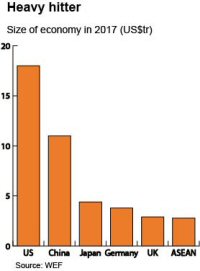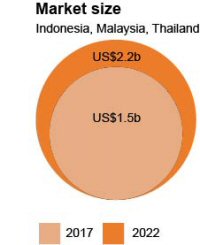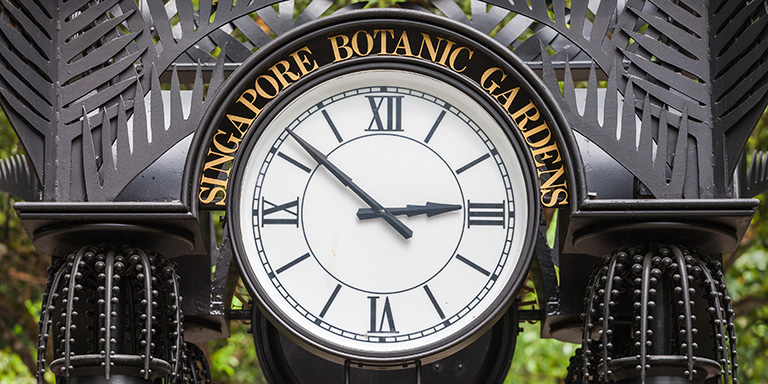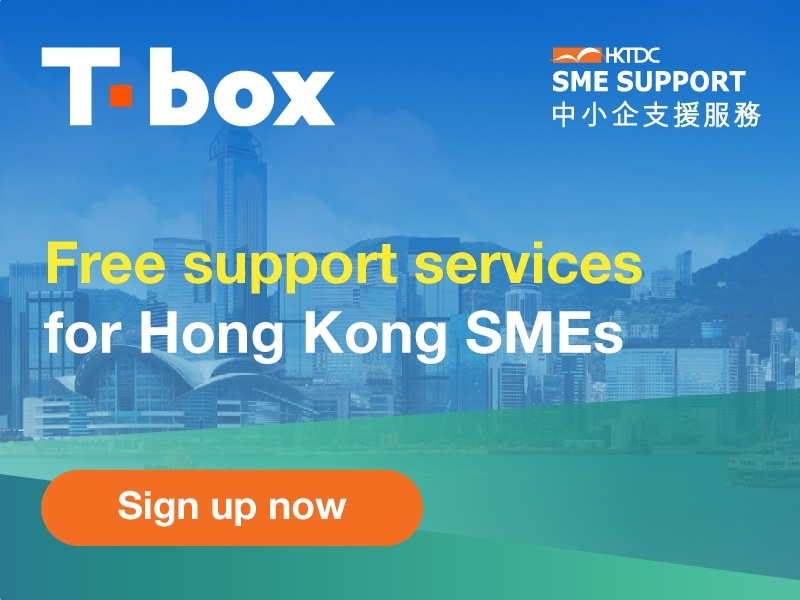
A rapidly evolving digital landscape has dramatically changed consumer behaviour, while the smartphone and electronic wearable boom has put pressure on watch usage. Despite these challenges, consumer demand for watches continues to grow in major Association of Southeast Asian Nations (ASEAN) countries.ASEAN has made remarkable progress in the past decade to become an economic powerhouse. ASEAN Secretariat data shows the region's combined gross domestic product in 2017 was US$2.76 trillion, making it the world's sixth-largest economy. With an annual growth forecast at about 5%, ASEAN is expected to become the fourth-largest economy by 2030.The region’s combined population of 642 million is the third-largest in the world, after China and India. Its rapid urbanisation, growing middle class, expanding skilled workforce, foreign investment inflows and improving infrastructure are key to unlocking the region's vast economic potential.

Among the 10 ASEAN members, Thailand, Malaysia and Indonesia have caught the attention of many Hong Kong exporters and retailers, thanks to their fast-expanding middle class and strong purchasing power. As growing affluence continues to translate into buying power, consumer spending on discretionary lifestyle items has been rising. According to Euromonitor International, combined retail sales of watches in Thailand, Malaysia and Indonesia amounted to US$1.5 billion in 2017 and are expected to grow an average 8% a year to reach US$2.2 billion in 2022. Millennials have a rising appreciation for exclusivity and a propensity to spend on middle-to-high-end watches.The lucrative watch market in Thailand, Malaysia and Indonesia continues to attract new entrants – both well-established and emerging brands – offering consumers greater choice but resulting in more intense market competition. Penetrating this competitive watch market and achieve sustained success remains a challenge for many watchmakers and exporters.Aiming to guide Hong Kong small and medium-sized enterprises (SMEs) in the watches industry, this report explores the export potential in selected ASEAN markets, namely Thailand, Malaysia, Indonesia and Singapore (as a regional hub). It evaluates the retail structure and distribution channels, and provides a guide to optimal market entry and marketing strategies.
Market overview

The rise of affordable luxury brands and fashion watches coincides with the growing aspirations of middle-class consumers in ASEAN.Smartwatches offer convenience and connectivity to tech-savvy ASEAN consumers. Given the release of the Apple Watch and its Android rivals, the smartwatch appears to have momentum.Today’s consumers live and breathe digital, so businesses must continue to respond to consumer trends and create a digital experience that measures up to expectations.The Hong Kong Trade Development Council’s (HKTDC) ASEAN Middle-income Consumer Survey showed 62.1% of respondents chose online user reviews as the top touchpoint influencing their purchase decisions on lifestyle products, followed by product review/comparison/recommendation (56.5%) and social media (52.4%).
Watch styles and trends

The past few years have seen a boom in affordable luxury watch brands, including the Swedish brand Daniel Wellington (DW), which created a line of classic and minimalistic watches priced at about US$150-300. By collaborating with Instagram influencers to reach millions of customers, DW achieved great success worldwide. Together with other minimalistic watch brands such as Linje, these emerging brands have demonstrated that simplicity has become a key trend in the watch market.Many luxury watch brands still focus on high complexity and accuracy but other watch brands concentrate on aesthetics, including the MVMT brand. In today’s Instagram era, consumers buy many watches to match different looks. A fashion watch is all about innovation and style. It is not what is inside the watch that counts, but what is outside.Some brands offer craftsmanship, design and features that are similar to a luxury watch, but at a fraction of the price. These timepieces may use high-quality components, such as a Swiss movement, a sapphire crystal glass top, and a vegetable tanned leather strap, but are assembled in countries with lower production costs. These affordable luxury watches have price tags ranging from US$200 to US$1,000.
Distribution channels
Watch specialist retailers are shops with a diversified portfolio, comprising many brands. They purchase in bulk from brands and then sell the stock to end-users. Authorised dealer agreements prohibit retailers from selling at discounts. However, consumers purchasing watches through this channel enjoy the peace of mind that they are buying legitimate, top-quality watches that come with official warranties.The watch specialist retailer is an ideal distribution channel for watch brands to gain access to the ASEAN markets, as it is top of consumers’ minds when thinking about watch buying. At a watch specialist store, consumers are pampered with a wide variety of brands and styles, and in-store assistants offer professional advice.In Thailand, upscale department stores like Central Department Store, Central Embassy, Siam Paragon, and The Emporium normally have a designated zone for timepieces. Luxury watch shoppers still prefer physical stores to online shopping. Major department stores organise annual watch shows, with “Siam Paragon Watch Expo” in Thailand one of the most anticipated events for watch lovers.As millennial shopping trends in Indonesia have shifted to specialty outlets and online stores, Indonesia’s largest department store chains like Matahari and Ramayana continue to respond by transforming their retail strategy.In Malaysia, department stores remain an important distribution channel for watches. Major department store chains such as Parkson and Metrojaya continue to upgrade product portfolios to include a wider selection of brands to attract middle- and high-income consumers.The core customer group of upscale department stores is women aged between 30 and 40. They are usually middle- to-high-income professionals and buy watches from department stores priced between US$600 and US$1,000.The advantages of selling to department stores are: suppliers can expect higher sales turnover, greater brand awareness and validation, as well as more visibility to other buyers. On the downside, department stores do not purchase wholesale and they require a higher commission and extended payment terms.Duty free (DF) shops can be found in airports and downtown districts, as well as onboard airliners and ferries. In ASEAN, the growth in travel retailing is expected to be driven by increasing tourist arrivals in major airports.Changing traveller behaviour, exchange rate volatility and the rise of e-commerce play an important role in airport sales. To maintain and grow customer conversion and sales, the airport retail proposition needs to adapt quickly and operate with greater efficiency.Demand for more exclusivity within the travel retail channel offers an exceptional opportunity for emerging watch brands with original design concepts. Hong Kong watch brands and traders can work in partnership with regional DF operators, such as LOTTE Duty Free, Heinemann Asia Pacific and DFS Group, to provide exclusive watch collections or limited editions to gain access to the ASEAN market.Online authorised dealers are now considered an important distribution channel. This is a big shift in thinking that will require the industry to adapt to a new way of doing business.Countries with less severe physical infrastructure constraints, such as Malaysia and Thailand, are better positioned to benefit from e-commerce. Indonesia has great long-term e-commerce potential given its large and rapidly growing middle class and young consumer market.Today, many watch brands have begun to sell through their own websites, third-party marketplaces as well as local e-tailers, such as Central Online and MAP. In general, sellers on a third-party marketplace are not required to pay listing fees; they pay a commission based on transactions. Both Lazada and Shopee support sellers with cross-border logistic programmes and multiple payment methods.The high mobile-phone penetration rate in ASEAN, reluctance of ASEAN consumers to share financial and personal information online and low rates of debit or credit card usage explain why social commerce is emerging rapidly in ASEAN.In Thailand, about half of online shoppers buy through social media, making it the biggest social commerce market in the world. Social media allows e-commerce merchants to reduce conversion friction, streamline the path to purchase and increase sales passively.The impressive performance of MVMT Watch’s Facebook shop has proved that it is quicker and more comfortable for customers to check out on Facebook. Through Pinterest, an image-sharing social platform, the company has achieved higher conversion rates and higher average order values than other online traffic sources.With more refined local tastes and the rising number of watch collectors and enthusiasts, the watch-collecting market has expanded quickly in ASEAN over the past few years. In private-sale events, most guests are aged between late 20s and early 40s and are willing to spend tens of thousands of US dollars for their first collectible watch.Premier watch importers, distributors, retailers and auction houses regularly host private sales of collectible watches to engage watch aficionados and collectors. These events could be a party, a luncheon or a gala dinner. The private sales showcase rare, collectible, vintage and modern timepieces and celebrate superior craftsmanship, design and creativity.
Market entry methods
Luxury watch brands, such as Patek Philippe, Rolex, Piguet and Omega, have opened monobrand boutiques in major ASEAN cities. Fashion houses like Cartier, Gucci, CERRUTI 1881 and Michael Kors also display their timepieces together with other fashion items in flagship stores. In ASEAN, many monobrand watch boutiques are managed by a regional watch retailer and distributor who has deep knowledge of consumer tastes in various ASEAN markets.Appointing authorised retailers/dealers is a common way to enter the ASEAN market. Watch brands can use an existing retail network to expand their geographical operations quickly and gain access to a large customer base without investing in opening and managing their own stores. Leading timepiece retailers in ASEAN include PMT The Hour Glass, Sincere Fine Watches, INTime, Watch Studio and City Chain.A two-tier distribution system – through an authorised distributor, as well as an agent and dealer – is also a common entry method for foreign watch brands. This system gives the brand the advantage of dealing with just a few major customers. The authorised distributor takes care of selling the watch brand’s products through its network of dealers and retailers. They also share the burden by purchasing pieces in bulk on their own account and freeing up the watchmaker's working capital for the next round of product development.Watch brands have started to launch official e-commerce boutiques, which means consumers can buy safely and directly. Selling direct to consumers has many benefits. First, time to market is significantly reduced. Second, brands have complete control of image and pricing. Most importantly, brands can gain access to data on consumer purchasing behaviour and preferences.
Be prepared!
Trade finance is a challenge facing small businesses in Hong Kong. Now, SMEs can find institutes to fund retail orders based on a purchase order or invoice from an overseas buyer.To accept overseas orders, e-commerce sellers have to set up cross-border payment systems. Payment solution providers who offer a one-stop secure online payment service that supports multiple delivery channels and multiple currencies can be of great assistance.Regional e-fulfilment hubs combined with cross-border shipping are widely used by Hong Kong e-commerce operators selling into the fragmented ASEAN market . With relatively low customs duties, mature infrastructure and transparent customs regulations among ASEAN nations, Singapore is often considered a regional e-fulfillment hub. Malaysia is another choice of regional distribution hub with its lower costs of operation, land and labour.Participating in international trade fairs is still one of the most effective ways to meet retail buyers and distributors. There are several major international watch trade fairs, including Baselworld, SIHH, and the HKTDC Hong Kong Watch & Clock Fair, as well as local events such as Siam Paragon Watch Expo.Other marketing avenues include partnering with a retailer to host a trunk show and social media marketing. For emerging watch brands, collaborating with influencers and leveraging user-generated content (UGC) on social media can help build a positive brand image with a relatively small marketing budget. By strategically deploying both influencer marketing and UGC, DW has successfully reached millions of consumers.Developing and/or acquiring intellectual property rights (IPR) in a new market could help increase protection and enforcement against infringers. Trademarks and patents are two common types of IPR that apply to the watch industry.Purchase the full research report.Related link
HKTDC Research


